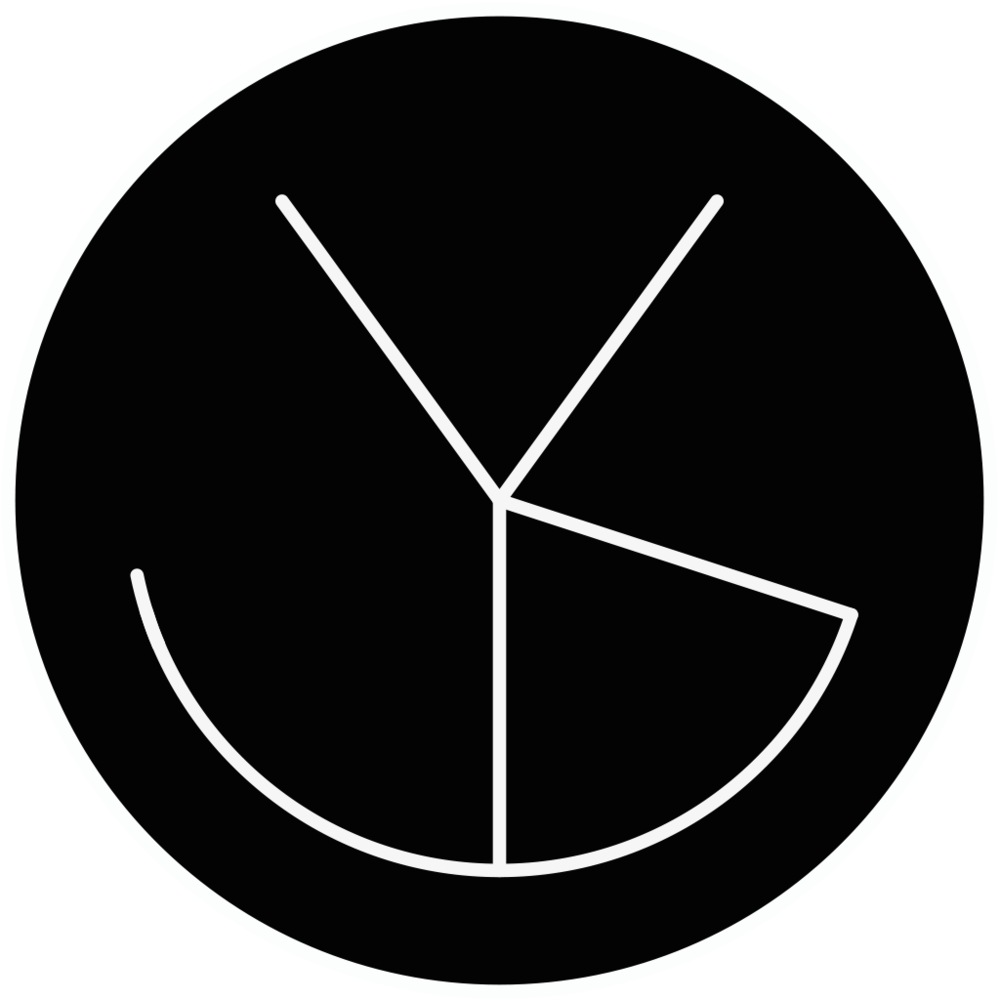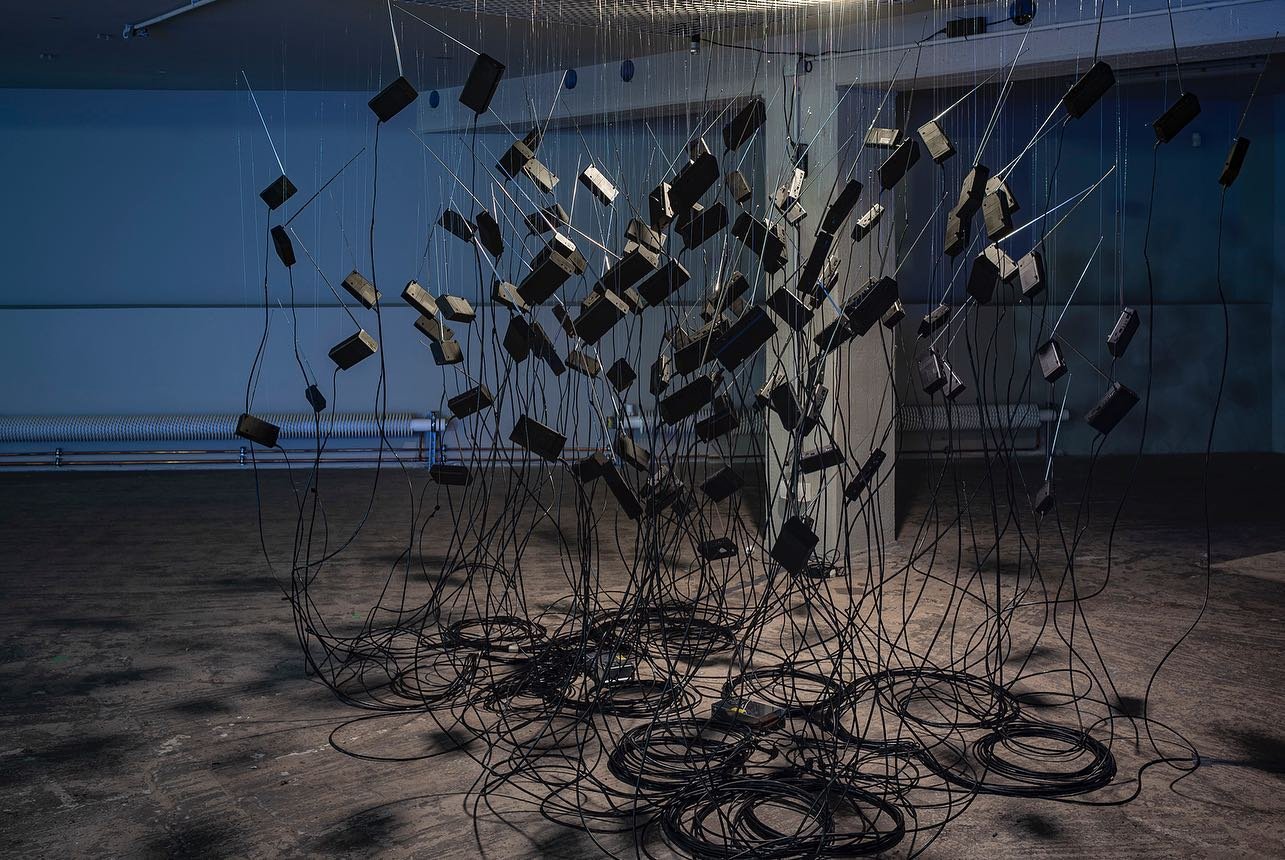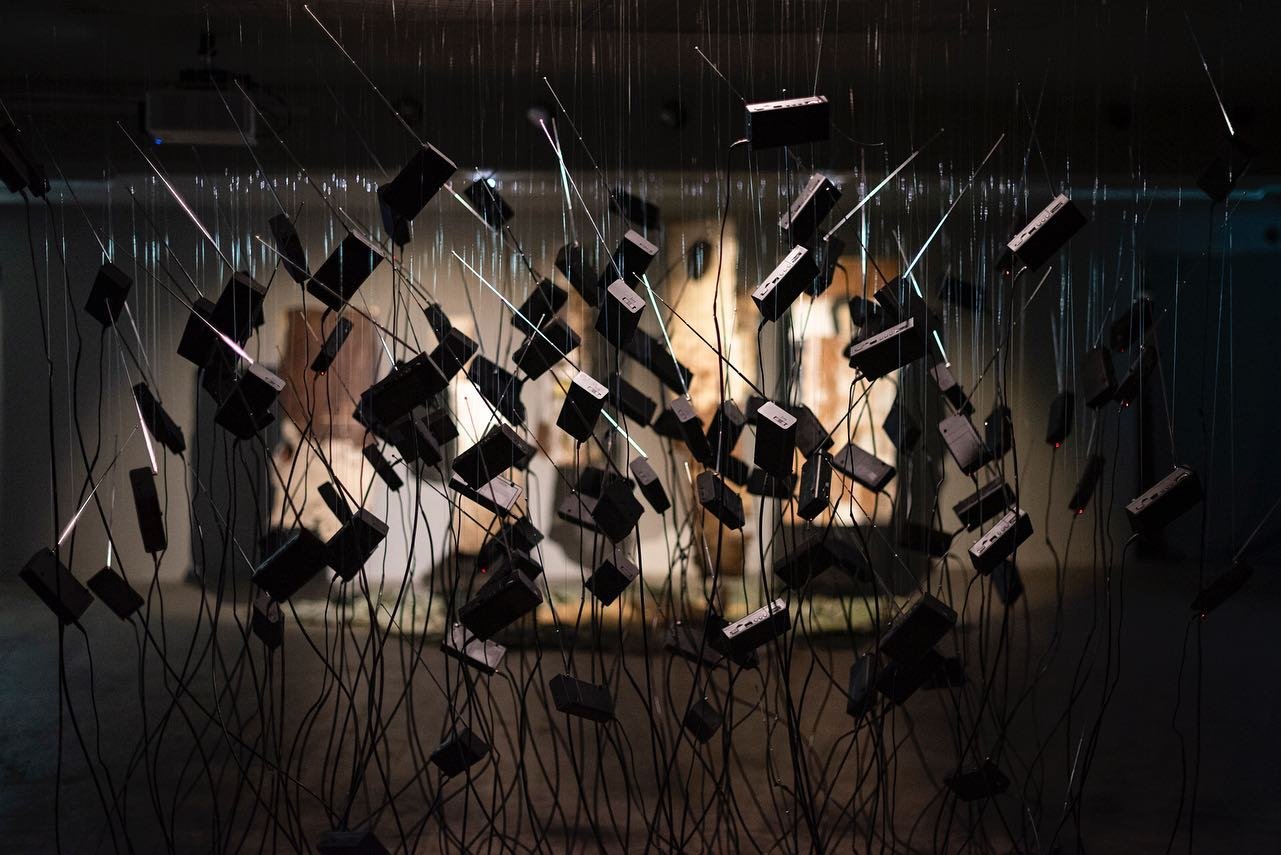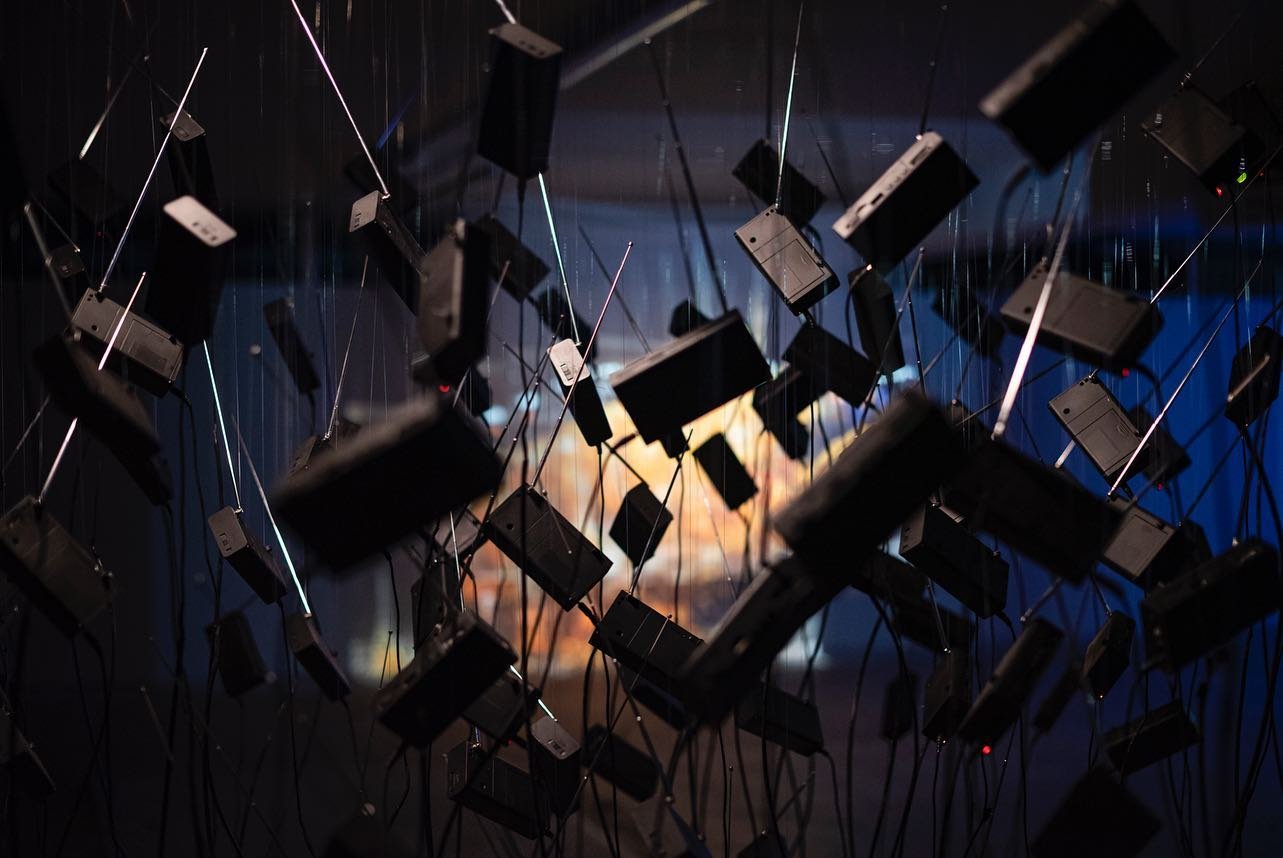RE-DESIGN, PRODUCTION & INSTALLATION OF 59.59 artwork by Corinne de San Jose with 118 radios at Savvy Contemporary
“Is it a thicket or an adventurous wiring construction in a megacity? Are we entering a space of silence or echoed noise?
Entering the basement of SAVVY we find ourselves in the shades of silence: In Corinne de San Jose’s „59.59“, 118 radios play an audio loop of crickets chirping, broadcast through different FM frequencies, half playing recordings of crickets in their natural habitat, the other half recordings from a farm that breeds crickets for human consumption. The installation negotiates silence and the duality this phenomenon carries with its forever counterpart, noise. It asks the question how much silence weighs and what space it can create. In the context of the tropics, silence is a precious and precarious state that one has to purposefully create, if possible to create it at all. The sound of the crickets in the installation echoes the universal cliché for silence and calmness. The radios reflect on the two different meanings of the phrase “radio silence”. Through these explorations on silence and interconnectedness, the artist is investigating questions around silence and sound and how our own personal narratives interfere in perceiving, filtering and interpreting these phenomena.”
FOH Live Sound Engineering for The Beast Within @ St. Marienkirche in Berlin | Projekt Gestallten, Princess Of Death, Canta:re Choir, The Allegorist
FOH Live Sound Engineering for the Performance Stage | WHOLE Festival 2022
FOH Live Sound Mixing for BSÍ Tour in Germany
DATES
20.08 Columbiahalle, Berlin (Supporting Tocotronic) - sold out
19.08 Ms Dockville Festival, Hamburg
18.08 Capitol, Hannover (Supporting Tocotronic)
09.07 Sommerpalooza, Erfurt (Supporting Beatstakes)
08.07 Transit Festival, Burg Klempenow
Music Mixing Engineering for "You Are Everything" by Transnormalcy presented by Nowness
Recording Engineering for The Black Cheetahs "Slow Doomed Fever" LP
FOH Live Sound Mixing for DIVEN tour in Germany
DATES
11.09.2022 Theaterzelt im Alunapark | Dresden
10.09.2022 Freies Forum Tanz FTT | Düsseldorf
25.06.2022 Lübeck
24.06.2022 Lübeck
23.06.2022 Lübeck
04.06.2022 Bremen
Building Stage for CTM Festival & Atonal Berlin - Chernobyl Benefit Concert @ Kraftwerk Berlin
Mixing & Mastering Engineering of "The Assurance Compilation" by Juba
Recording Engineering & Partial Mixing Engineering of Vocals & Live Percussions for "Photophobia" LP by Sanni Est
Live Sound + Recording Engineering for Jon Aro Performance at Soho House Berlin
Mixing Engineering of "One Of A Kind" by Cristian Marras released on vinyl by Gegen Records
Mixing Engineering of "UN[BRIDLE]D" LP by Deepneue released on CD & Digital by Kepler Live
Sound Technik for Burlesque Show @ Soho House Berlin
Sound Technik for Jennifer Cardini @ Soho House Berlin
Sound Technik for SİNEMA TRANSTOPIA OPEN AIR | IMAGINING QUEER BANDUNG by Bi'bak @ Haus der Statistik
Re-Design, Production & Installation of 4+2 Soundsystem: Concrete Speakers for Vivian Caccuri exhibition at Savvy Contemporary Berlin
Vivian Caccuri’s installation reflects on a specific type of mosquitos found in the Amazonas region which face extinction due to deforestation. The work reflects on sounds that are steadily escaping our soundscapes, due to an increased man made source of noise. Instead of associating noise with the unwanted – such as the sound of a mosquito, Caccuri seeks inspiration in El-Dabh’s philosophy that noise is rather a space of accepting all sounds to cohabit spaces. Lorenzo Sandoval’s sonic travelogue dives into archives of El-Dabh, bringing its contents into relation with materials and concepts of color, waves, mathematics, rhythm and space, to explore the notion of divergent genealogies from the logic of Lefebvre’s rhythmanalysis. Lastly, through Emeka Ogboh’s installation, Halim El-Dabh’s sonic and musical practice finds a new visuality in the moving images when sonic waves mesh into each other while both of them are inseparable sensory experiences.
Mastering Engineering of "Omnia Vanitas" EP by Mala Herba released by Aufnahme + Wiedergabe
Livestream Audio Engineering for Re:Writing The Future 25-26.02.2021 at Allianz Forum in Berlin
Day 1
11:30 – 12:00 OPENING RE:WRITING THE FUTURE FESTIVAL
with Max Czollek, Silvia Fehrmann and Helge Lunde. Host: Esra Küçük.
A conversation between the festival‘s curators and organisers.
12:00-13:30 REPORT ON THE STATE OF ARTISTIC FREEDOM 2021
with Shurooq Amin, Rasha Nahas, KAK, Srirak Plipat, Mary Lawler, Ramy Essam (tbc), Jasmina Lazović (tbc), Luis Manuel Otoro Alcántara; Host: Nazeeha Saeed. Freemuse presents its annual Report on the State of Artistic Freedom after the opening of the Re:Writing the Future festival.
14:30 – 15:00 ARTIST TALK 1 - Ali Hasan
Host: Esra Karakaya.
16:00 – 17:30 ARTS IN EXILE – CHALLENGES, EXPERIENCES UND CULTURAL PRACTICES IN BERLIN
with Khaled Barakeh, Ali Hasan, Shermin Langhoff, Marina Naprushkina, Sasha Waltz. Host: Esra Küçük.
A panel discussion on the challenges encountered by Berlin-based cultural practitioners and artists in exile. Event in English and German.
Day 2
10:30 – 11:30 ARTIST TALK 2 - Mariana Katzarova, Maryna Rakhlei
Host: Esra Karakaya.
12:00 – 13:30 BERLINER KULTURPOLITIK NACH DER PANDEMIE: WIE LASSEN
SICH KULTURELLE VIELFALT UND TEILHABE WIEDERHERSTELLEN? mit Vera Allmanritter, Klaus Lederer und Janet Merkel. Moderation: Sven Sappelt. Eine Diskussion von der Hertie School zu den Auswirkungen der Pandemie auf die Kunst- und Kulturlandschaft Berlins. In German.
14:30 – 15:00 ARTIST TALK 3
Host: Esra Karakaya.
16:00 – 17:30 EROSION OF THE RULE OF LAW
– AUTHORITARIANISM AND SHRINKING SPACES
with Katja Gloger, Veysel Ok, Sascha Girke (tbc) and Yiota Masouridou; Host: Wolfgang Kaleck.
19:30 – 21:00 UNDOING PRISON
with Zehra Doğan, Can Dündar
and Aslı Erdoğan. Host: Nil Mutluer.
What does it mean to a society and to the work of artists and authors when one is in danger of being censored or convicted for their work?
In Turkish with English translation.
Learn more about: Re:writing The Future














